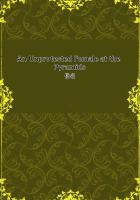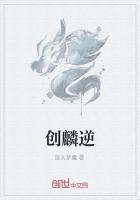In her long history there can have been few mornings upon which Edinburgh had more to offer her burghers in the way of gossip and rumour than on that of the 1st of July, 1600.In this `gate' and that `gate,' as one may imagine, the douce citizens must have clustered and broke and clustered, like eddied foam on a spated burn.By conjecture, as they have always been a people apt to take to the streets upon small occasion as on large, it is not unlikely that the news which was to drift into the city some thirty-five days later--namely, that an attempt on the life of his Sacred Majesty, the High and Mighty (and Rachitic) Prince, James the Sixth of Scotland, had been made by the brothers Ruthven in their castle of Gowrie--it is not unlikely that the first buzz of the Gowrie affair caused no more stir, for the time being at any rate, than the word which had come to those Edinburgh folk that fine morning of the first day in July.The busier of the bodies would trot from knot to knot, anxious to learn and retail the latest item of fact and fancy regarding the tidings which had set tongues going since the early hours.Murder, no less.
If the contemporary juridical records, even what is left of them, be a criterion, homicide in all its oddly named forms must have been a commonplace to those couthie lieges of his Slobberiness, King Jamie.It is hard to believe that murder, qua murder, could have been of much more interest to them than the fineness of the weather.We have it, however, on reasonable authority, that the murder of the Laird of Warriston did set the people of Auld Reekie'' finely agog.
John Kincaid, of Warriston, was by way of being one of Edinburgh's notables.Even at that time his family was considered to be old.He derived from the Kincaids of Kincaid, in Stirlingshire, a family then in possession of large estates in that county and here and there about Lothian.His own property of Warriston lay on the outskirts of Edinburgh itself, just above a mile from Holyroodhouse.Notable among his possessions was one which he should, from all accounts, dearly have prized, but whichthere are indications he treated with some contumely.This was his wife, Jean Livingstone, a singularly beautiful girl, no more than twenty-one years of age at the time when this story opens.Jean, like her husband, was a person of good station indeed.She was a daughter of the Laird of Dunipace, John Livingstone, and related through him and her mother to people of high consideration in the kingdom.
News of the violent death of John Kincaid, which had taken place soon after midnight, came quickly to the capital.Officers were at once dispatched.Small wonder that the burghers found exercise for their clacking tongues from the dawning, for the lovely Jean was taken by the officers `red-hand,' as the phrase was, for the murder of her husband.With her to Edinburgh, under arrest, were brought her nurse and two other servingwomen.
To Pitcairn, compiler of Criminal Trials in Scotland, from indications in whose account of the murder I have been set on the hunt for material concerning it, I am indebted for the information that Jean and her women were taken red-hand.But I confess being at a loss to understand it.Warriston, as indicated, stood a good mile from Edinburgh.The informant bringing word of the deed to town, even if he or she covered the distance on horseback, must have taken some time in getting the proper authorities to move.Then time would elapse in quantity before the officers dispatched could be at the house.They themselves could hardly have taken the Lady Warriston red-hand, because in the meantime the actual perpetrator of the murder, a horse-boy named Robert Weir, in the employ of Jean's father, had made good his escape.As a fact, he was not apprehended until some time afterwards, and it would seem, from the records given in the Pitcairn Trials, that it was not until four years later that he was brought to trial.
A person taken red-hand, it would be imagined, would be one found in such circumstances relating to a murder as would leave no doubt as to his or her having airt and pairt'' in the crime.Since it must have taken the officers some time to reach the house, one of two things must have happened.Either some officious person or persons, roused by the killing, which, as we shall see, was done with no little noise, must have comeupon Jean and her women immediately upon the escape of Weir, and have detained all four until the arrival of the officers, or else Jean and her women must have remained by the dead man in terror, and have blurted out the truth of their complicity when the officers appeared.
Available records are irritatingly uninformative upon the arrest of the Lady Warriston.Pitcairn himself, in 1830, talks of his many fruitless searches'' through the Criminal Records of the city of Edinburgh, the greater part of which are lost, and confesses his failure to come on any trace of the actual proceedings in this case, or in the case of Robert Weir.For this reason the same authority is at a loss to know whether the prisoners were immediately put to the knowledge of an assize, being takenred-hand,'' without the formality of being served a dittay'' (as who should say an indictment), as in ordinary cases, before the magistrates of Edinburgh, or else sent for trial before the baron bailie of the regality of Broughton, in whose jurisdiction Warriston was situated.
It would perhaps heighten the drama of the story if it could be learned what Jean and her women did between the time of the murder and the arrest.It would seem, however, that the Lady Warriston had some intention of taking flight with Weir.One is divided between an idea that the horse-boy did not want to be hampered and that he was ready for self- sacrifice.You shall tarry still,'' we read that he said; and if this matter come not to light you shall say, `He died in the gallery,' and I shall return to my master's service.But if it be known I shall fly, and take the crime on me, and none dare pursue you!''















